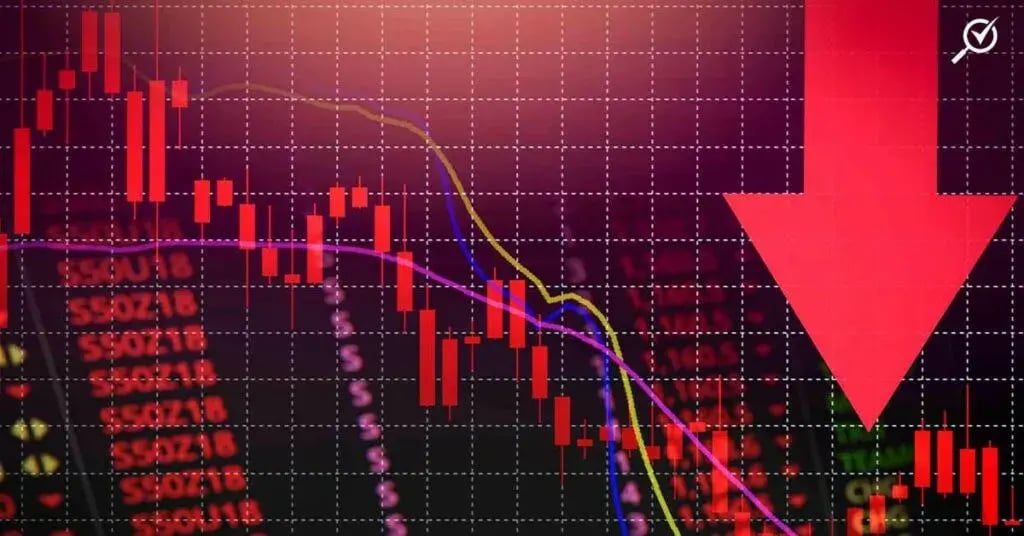One of the biggest reasons that some people prefer to stay away from stocks and invest in other assets such as government bonds and fixed deposit accounts is that the stock market is nowhere near stable. Investing in it can almost be expounded as a roller coaster ride.
Formally, a stock market correction is described as a drop of at least 10% from the previous highs. Although it might be scary and might make you sweat a little, it’s usually not a bad thing. In fact, most investors would even argue that it is a natural phenomenon. With that, let me tell you 8 things you need to know about a stock market correction.
1. Different types of decline
More often than not, with the amount of news and chatter around the stock market, proper terms get their definition diluted. You know that there are only two ways the market can go - up or down. But do you know that there are different types of selloff?
Pullback
- This is the one that you should worry about the least.
- A pullback is defined as the retracement of between 5% - 10%.
Correction
- A correction is a little more severe.
- From 10% - 20% from the prior highs.
Bear market
- A bear market refers to being down more than 20% from the peak.
- This market is over a much larger timeframe and can last longer than a pullback or a correction.
The good news is that from past history, market correction or even a bear market is proven to be much shorter-lived than a bull market. Although it might take a bear market a few years to recover, the bull market that follows will last much longer.
2. Corrections are inevitable and healthy
We all know that the stock market cannot always reach for the top right corner of our screens. If it does, it calls for even more concern in other places of our financial systems, like inflation. Ergo, at some point, where the market is up in the skies and demand dries up, the inevitable excess supply will drive the numbers across your portfolio.
But fret not, corrections are crucial for the markets to stay healthy.
This slight decline allows you, as well as other investors to buy in at a more valuable price. And when there are investors trying to buy the stock, the demand restarts and pushes the prices up even higher.

3. Corrections are short-lived
From the 36 corrections in the S&P 500, only 7 of them lasted for more than a year.
One of the reasons for this is that corrections can come quickly.
If you’ve ever made the decision to get in shape or go on a diet, you know that one day is all it really takes to wipe away weeks, if not months of your hard work. The stock market works the same.
Take a look at the S&P 500 during the COVID-19 market crash in 2020.

Screenshot taken from Yahoo Finance
It took the S&P over 4 years to get from roughly $230 up to $330 and only about 1 month for it to drop back down to $230. Of course, every situation is different but the idea is that on the bigger picture, the stock market will go up, but the corrections are going to be more violent than the rallies.
4. Volatility will be heightened
Following the previous point, the volatility index, or the VIX is known to soar to great heights during a correction.
This pivots on the fact that investors will be going through a number of different emotions. Especially for retirees who don’t have long to sit and wait for the investment to recover. Those who can take it remain invested, and many more of those who can’t take it liquidate. Causing abnormal volume in the markets.
5. It is impossible to predict
Despite being a natural phenomenon and a common scenario, not a single person in this world can predict when the market correction will happen. It is inevitable, but they are certainly unpredictable.
On top of it, there’s also no way of telling what is the cause of the stock market crash before it happens. Only after it had happened. Past events can help with the forecasting, but cannot be certain for 100%.
Will politics be the reason for the next market crash? Or will it be a natural disaster, panic among investors, or a federal reserve policy? We’ll never know.
6. It is an opportunity for long-term investors
Investors with time to spare in their lives should always view corrections, even bear markets, as an opportunity to buy shares at a “discounted price”. I say this because when the entire stock market goes down, individual stocks tend to follow this lead.
That said, this decline does not damage the company in any way shape or form. The fundamentals of the company and how the company operates is not affected by the stock price. Thus, when searching for stocks to buy or diversify, look for damaged charts, not damaged companies.
Related: #InvestInsights: What Should You Invest in During a Recession? An Expert Weighs In.
7. Consider dividend stocks
Historically, growth stocks are the ones that have led the overall stock market to reach new highs. However, they are a different set of stocks compared to dividend stocks, also known as income stocks.
Dividend stocks can give you more stability and are more reliable (although not guaranteed) in terms of paying you dividends. The predominant reason for this is that these are usually well-established corporations that have been proven to be profitable over a number of years.
What’s more, is that it can help you diversify your investments. If you can make the same amount of returns while taking on less risk, why not?
8. They do not matter in the long-run
Last but certainly not least, do know that it's common for people to panic about a stock market correction. If it helps, you can do your research to first check if the company has proven itself to be resilient. On top of this, another thing to note that is usually, if you zoom out the overall stock market chart, it’s almost always going up.
You have to think long term if you want to reap that sweet compound interest. The shorter the time frame that you’re looking at, the more noise and volatility there will be. However, with the constant supply of money flowing into the stock markets, it will only drive the demand up in no time.
Like what you hear? If you are interested in more investing tips and tricks, check out our investing section.
Disclaimer: Neither CompareHero.my nor the content on it is intended as securities brokerage, investment, tax, accounting or legal advice, as an offer or solicitation of an offer to sell or buy, or as an endorsement, recommendation or sponsorship of any company, security or fund. The content on CompareHero.my is for general information purposes only and is not intended to be personalised investment advice or a solicitation for the purchase or sale of securities.
Compargo Malaysia Sdn. Bhd. and/or its affiliates cannot and do not assess, verify or guarantee the adequacy, accuracy or completeness of any information, the suitability or profitability of any particular investment, or the potential value of any investment or informational source. CompareHero.my may receive compensation from the brands or services mentioned on this website.




